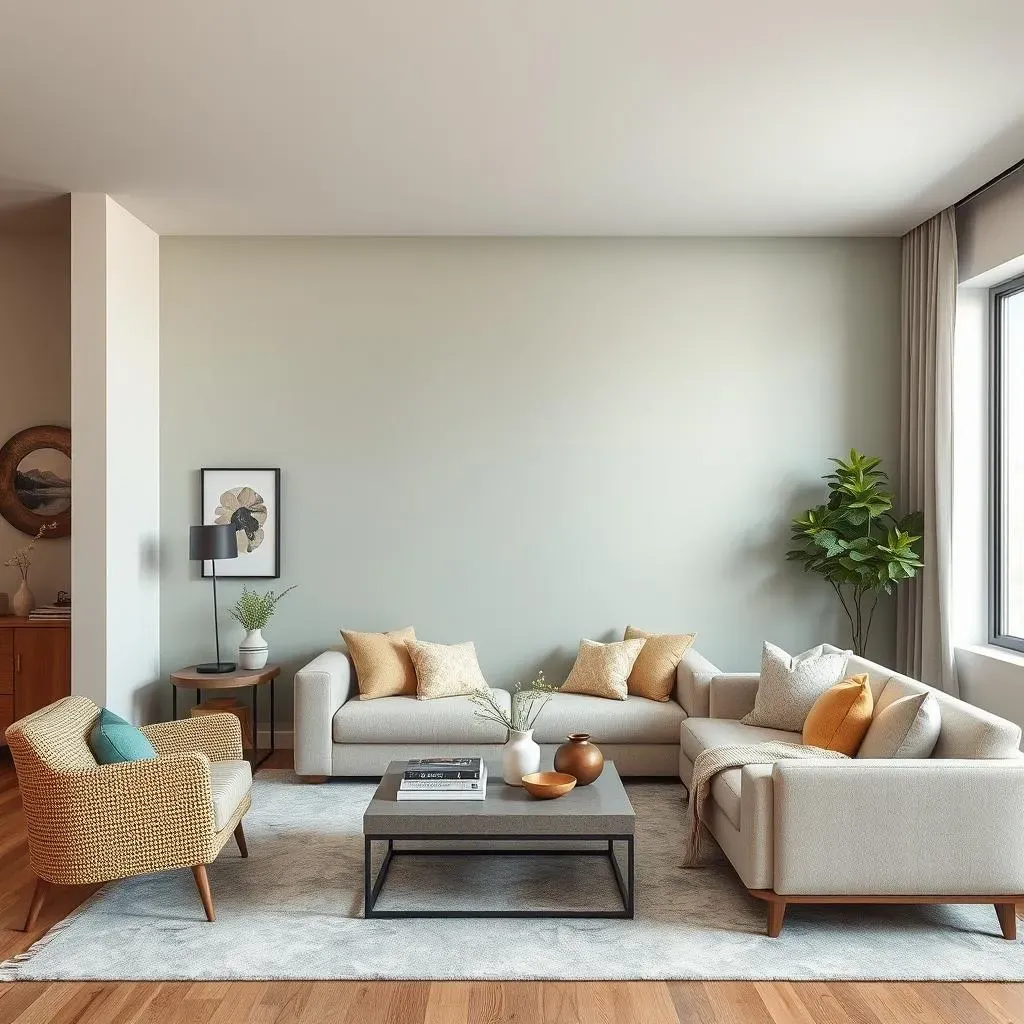Table of Contents
Feeling blah about your space? A fresh coat of paint can do wonders, but sometimes, you need a little extra oomph. Enter the accent wall – a single wall transformed with color and creativity to instantly elevate any room. But how do you choose the right wall, the perfect color, and the ideal technique? Don't worry, we've got you covered. This article is your ultimate guide to wall accent painting ideas, packed with inspiration and practical tips to help you create a stunning focal point in your home.
Best Accent Wall Colors: Choosing the Right Hue
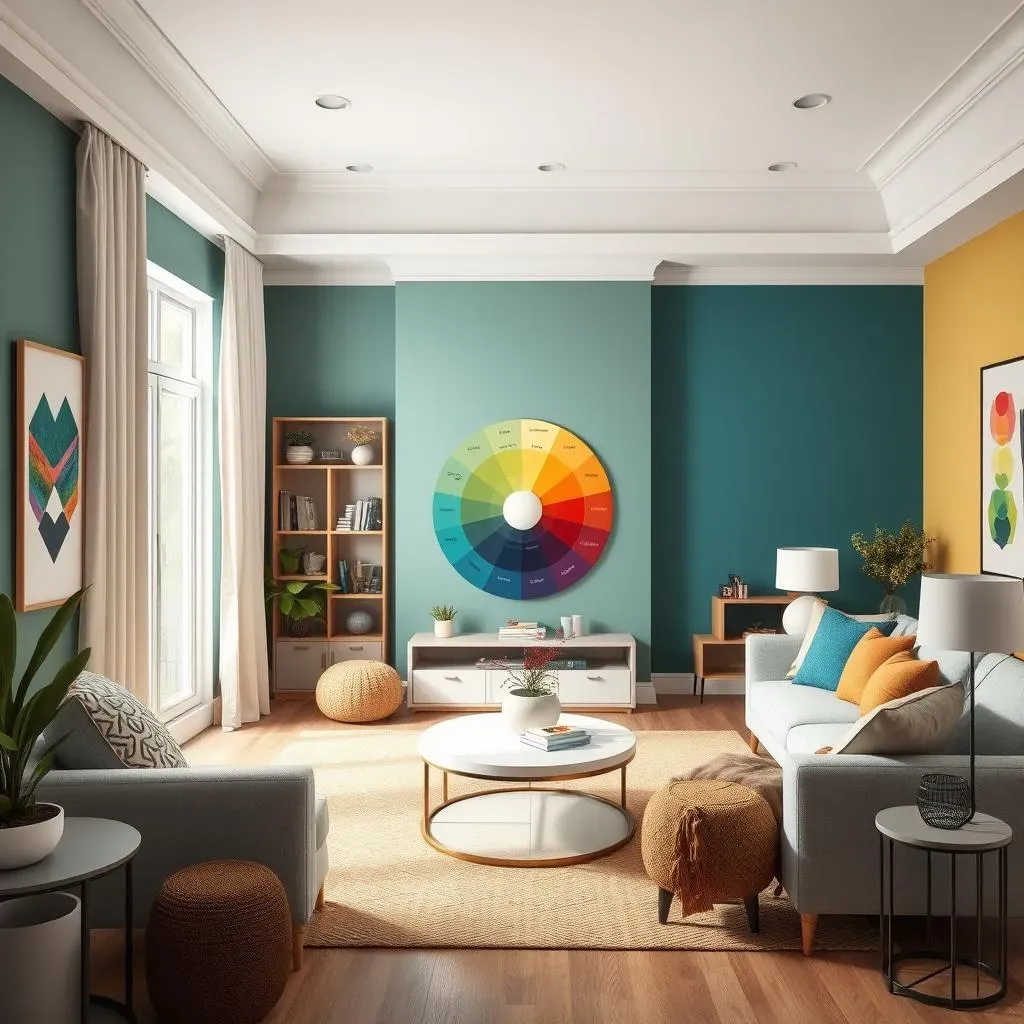
Best Accent Wall Colors: Choosing the Right Hue
Understanding Color Psychology
so you're ready to pick a color, but where do you even start? Color psychology is your friend here. Colors aren't just pretty; they evoke emotions and can seriously impact how you feel in a space. Think about it: a bright red might energize you in a home gym, but it could be way too intense for a relaxing bedroom. Cool blues and greens, on the other hand, tend to create a calming atmosphere, perfect for winding down after a long day. And don't underestimate neutrals! A warm gray or greige can add sophistication without being overwhelming.
Consider the room's purpose and the mood you want to create. Do you want a vibrant and stimulating workspace? Or a cozy and serene reading nook? Once you've identified the desired vibe, you can start exploring colors that align with your goals. It's not just about what looks good; it's about how the color makes you *feel*.
Finding Your Perfect Palette
Alright, you've got the basics of color psychology down. Now, let's talk about finding the perfect palette for your space. This isn't just about picking a single color; it's about how that color interacts with the existing elements in the room. Consider your furniture, flooring, and any existing artwork or décor. Do you want your accent wall to complement these elements or provide a bold contrast?
Think about using a color wheel to explore different color schemes. Analogous colors (those next to each other on the wheel) create a harmonious and balanced look. Complementary colors (opposite each other) offer a striking contrast and can add a lot of visual interest. And don't be afraid to experiment! Grab some paint samples and test them out in your space. Observe how the colors look in different lighting conditions and at different times of day. Trust your gut, and choose a color that you genuinely love!
Color Family | Associated Emotions | Best Room Use |
|---|---|---|
Blues | Calm, Serene, Tranquil | Bedrooms, Bathrooms, Offices |
Greens | Nature, Growth, Harmony | Living Rooms, Kitchens, Bedrooms |
Yellows | Happy, Energetic, Optimistic | Kitchens, Dining Rooms, Entryways |
Reds | Passionate, Bold, Exciting | Dining Rooms, Accent Walls (use sparingly) |
Neutrals (Gray, Beige, White) | Sophisticated, Calm, Versatile | Any Room (great for balancing bolder colors) |
20 Stunning Wall Accent Painting Ideas for Every Room
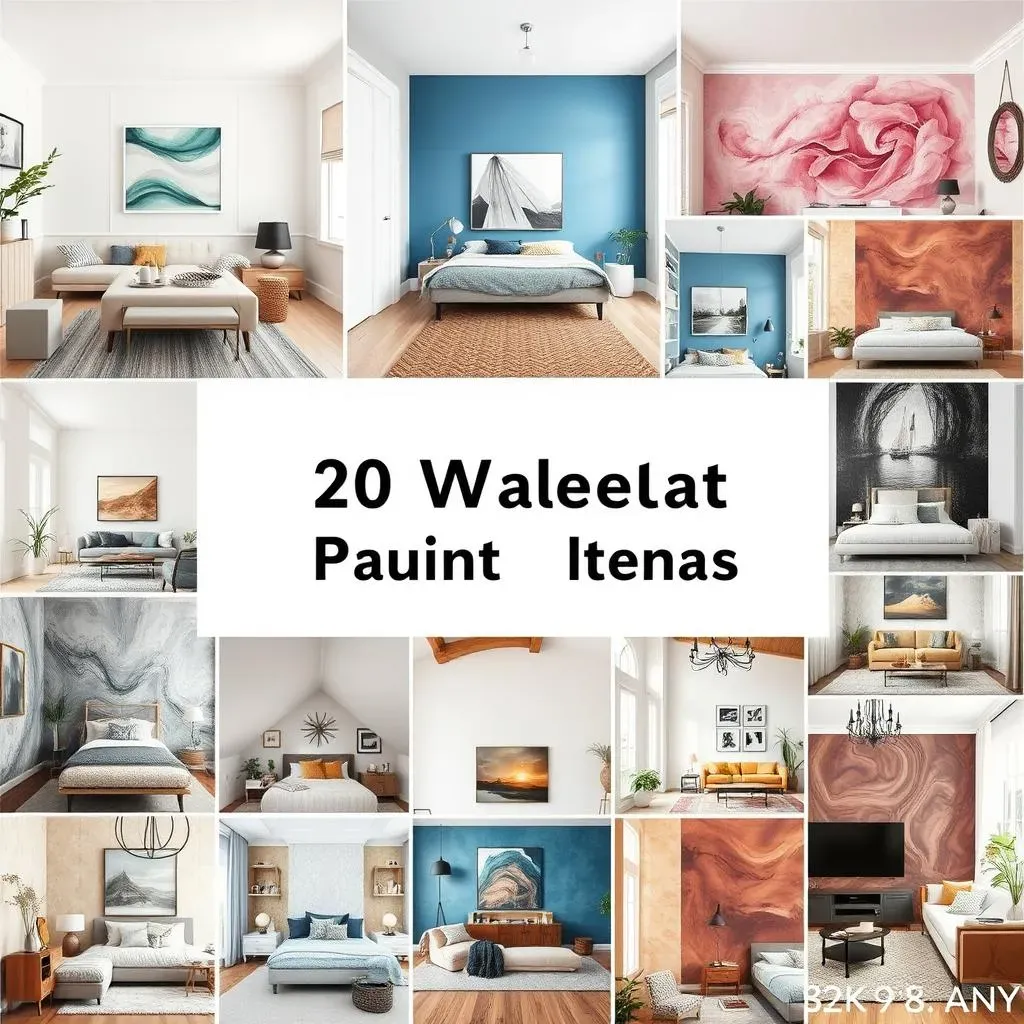
20 Stunning Wall Accent Painting Ideas for Every Room
Living Room Luxe: Statement Walls That Wow
Let's kick things off with the heart of the home: the living room. This is where you can really make a statement. Think beyond just a solid color. Consider geometric patterns for a modern vibe – a bold chevron or a sophisticated honeycomb design. Or, embrace texture with a faux brick or wood paneling effect. If you're feeling artistic, try a hand-painted mural or a stenciled design. The key is to choose something that reflects your personality and complements your existing décor.
Don't be afraid to go bold with color in the living room. A deep teal, a rich navy, or even a vibrant mustard yellow can create a dramatic focal point. Just remember to balance it out with neutral furniture and accessories. Lighting is also crucial. Highlight your accent wall with strategically placed lamps or spotlights to really make it pop. And if you're renting, removable wallpaper is your best friend! You can achieve the same stunning effect without damaging the walls.
Bedroom Bliss: Creating a Calming Oasis
Moving on to the bedroom, the goal here is to create a serene and relaxing atmosphere. While you can still make a statement, it's best to opt for softer colors and more subtle designs. Think calming blues, soothing greens, or warm grays. A textured accent wall can add a touch of luxury without being overwhelming. Consider using a sponge painting technique to create a subtle, cloud-like effect, or try a Venetian plaster finish for a sophisticated touch.
The wall behind your headboard is the natural choice for a bedroom accent wall. It not only creates a focal point but also helps to visually anchor the bed in the room. If you have a small bedroom, use a light-colored accent wall to make the space feel larger and more open. And don't forget about lighting! Soft, ambient lighting will enhance the calming effect of your accent wall and create a cozy and inviting atmosphere. Adding personal touches like framed photos or artwork can further personalize your space and make it feel like a true sanctuary.
Room | Accent Wall Idea | Color Palette |
|---|---|---|
Living Room | Geometric Pattern | Teal, Gray, White |
Bedroom | Textured Finish | Light Gray, Cream, Beige |
Kitchen | Chalkboard Paint | Black, White, Natural Wood |
Bathroom | Vertical Stripes | Navy Blue, White, Gold |
DIY Wall Accent Painting: Tips and Techniques
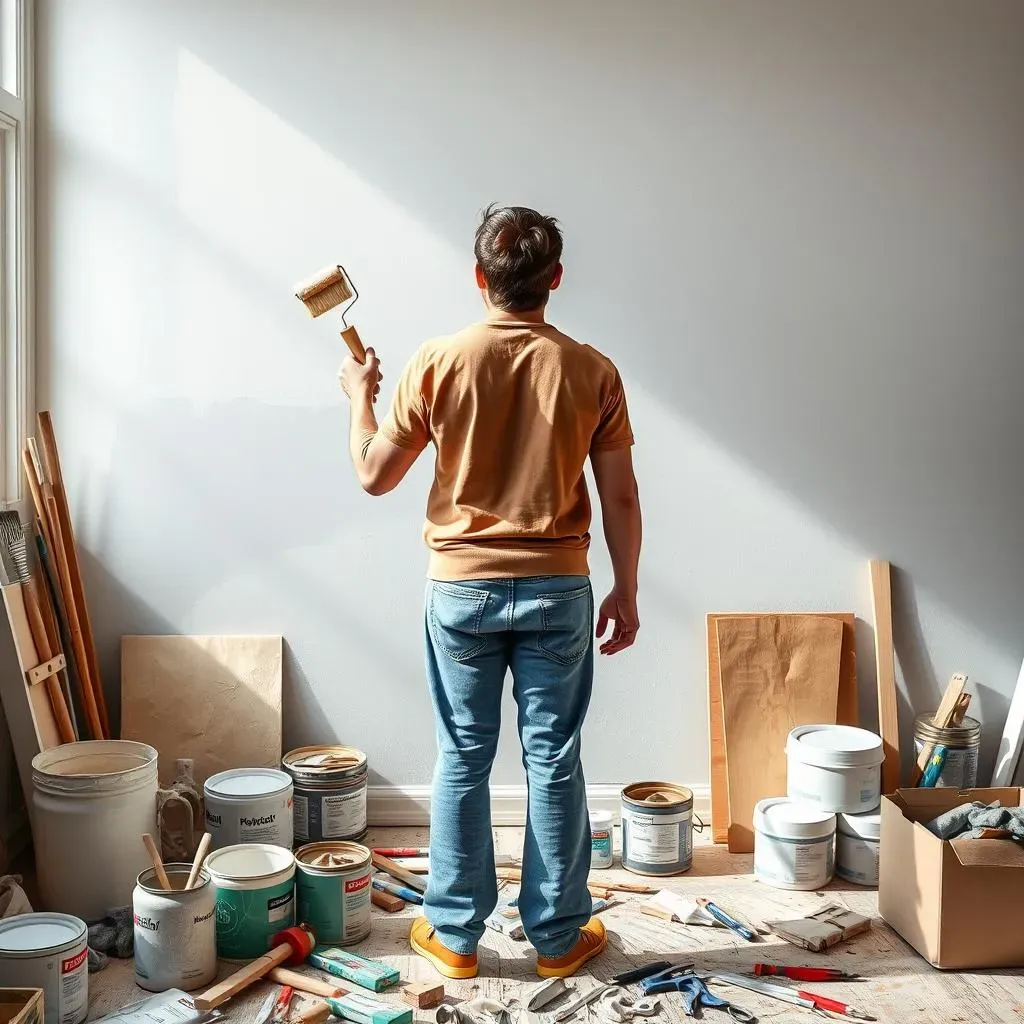
DIY Wall Accent Painting: Tips and Techniques
Prep Like a Pro
so you're itching to grab a brush and start slapping paint on the wall. Hold up! The secret to a flawless accent wall isn't just about the paint; it's about the prep work. Trust me, skipping this step is a recipe for disaster. Start by thoroughly cleaning the wall. Wipe away any dust, dirt, or grime. Next, grab some painter's tape and carefully tape off the edges of the wall, as well as any trim or molding. This will ensure crisp, clean lines and prevent any unwanted paint splatters. And finally, prime the wall! Primer creates a smooth, even surface for the paint to adhere to, resulting in a more vibrant and long-lasting finish.
Don't underestimate the power of good prep! It's the foundation for a beautiful accent wall that you'll be proud of for years to come. Think of it like building a house – you wouldn't skip the foundation, would you?
Essential Tools & Techniques
Now for the fun part: the painting itself! But before you dive in, make sure you have the right tools for the job. A high-quality paint brush is essential for cutting in along the edges and trim. A roller is perfect for covering large areas quickly and evenly. And don't forget a paint tray, drop cloth, and some stirring sticks. When it comes to technique, start by cutting in along the edges with your brush. Then, use the roller to apply the paint in smooth, even strokes, overlapping each stroke slightly to avoid any gaps. Apply two coats of paint for the best coverage, allowing each coat to dry completely before applying the next.
Remember, patience is key! Don't rush the process. Take your time, pay attention to detail, and enjoy the experience. And if you're trying a more advanced technique, like a geometric pattern or a textured finish, be sure to do your research and practice beforehand. There are tons of tutorials online that can guide you through the process. Don't be afraid to experiment and get creative!
Tool | Use | Tips |
|---|---|---|
Painter's Tape | Creating clean lines | Use a putty knife to press down firmly for a tight seal. |
Paint Brush | Cutting in edges, trim | Choose a high-quality brush for smooth application. |
Paint Roller | Covering large areas | Use a roller with the appropriate nap for your wall texture. |
Primer | Preparing the wall | Apply one coat of primer before painting. |
Troubleshooting Common Issues
Even with the best prep and technique, things can sometimes go wrong. Paint drips, uneven coverage, and visible brush strokes are just a few of the common issues that DIY painters face. But don't panic! Most of these problems are easily fixable. For paint drips, simply sand them down with fine-grit sandpaper and touch up with paint. Uneven coverage can be corrected by applying another coat of paint. And visible brush strokes can be minimized by using a high-quality brush and applying the paint in smooth, even strokes.
If you're dealing with a more serious issue, like peeling paint or bubbling, it's best to consult a professional. These problems can be a sign of underlying moisture issues that need to be addressed. But for most minor mishaps, a little bit of patience and some simple troubleshooting techniques will have your accent wall looking flawless in no time. Remember, everyone makes mistakes! The key is to learn from them and keep practicing.
Frequently Asked Questions About Wall Accent Painting
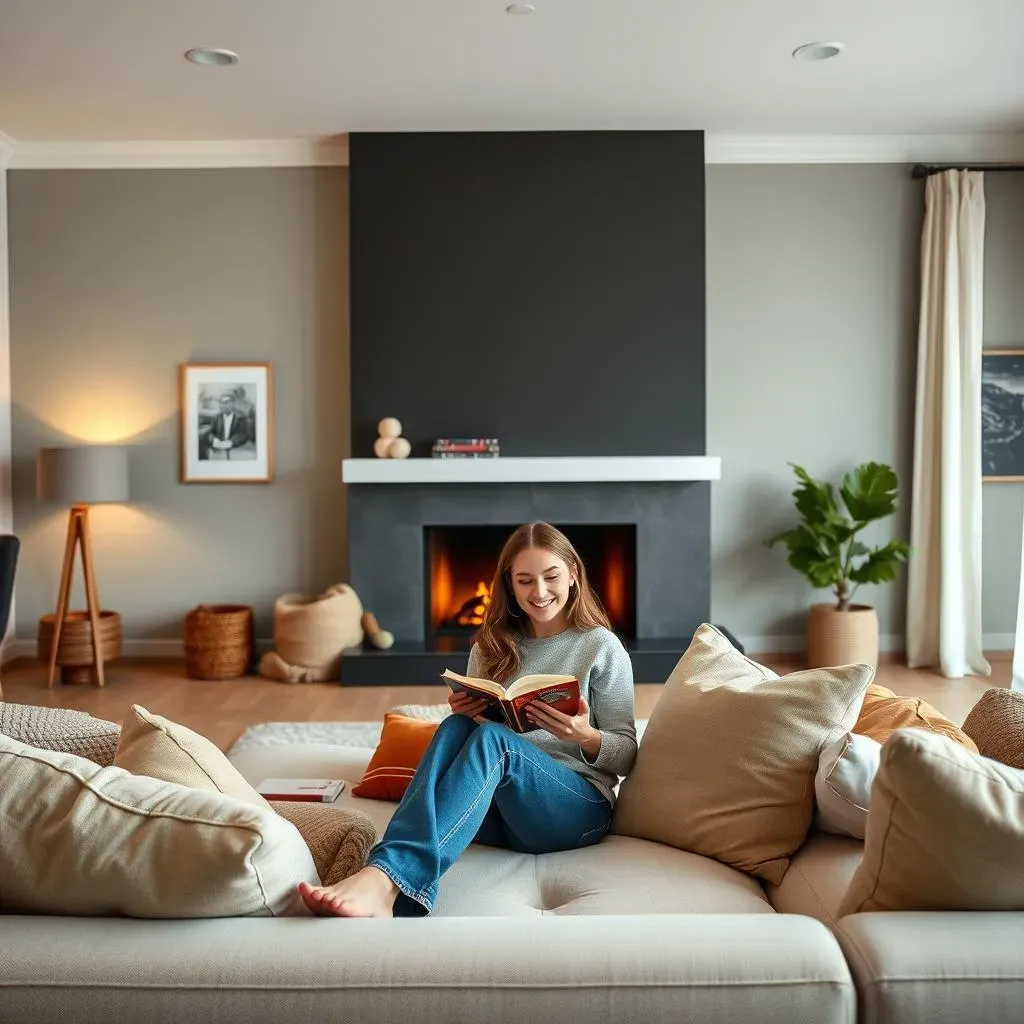
Frequently Asked Questions About Wall Accent Painting
What wall should I choose for an accent wall?
That's a great question! The best wall for an accent is usually the one that naturally draws your eye, or the one you want to highlight. Walls without windows or doors often work well. In a living room, it might be the wall behind the sofa or the fireplace. In a bedroom, it's often the headboard wall. Think about the room's focal point – that's your target!
How do I choose the right accent color?
Choosing the right color can feel daunting, but it's also the fun part. Consider the existing colors in your room. Do you want to complement them or create a contrast? If you have neutral furniture, you can go bolder with your accent wall. If your furniture is already colorful, a more muted tone might be best. Grab some paint samples and test them out in your space – lighting makes a huge difference!
Is one gallon of paint enough for an accent wall?
For most standard-sized accent walls, one gallon of paint should be plenty for two coats. However, it depends on the size of your wall and the paint's coverage. Always check the paint can for coverage information. It's better to have a little extra than to run out mid-project!
Can I paint an accent wall in a small room?
Absolutely! In fact, an accent wall can be a great way to add visual interest to a small space. Just be mindful of the color you choose. Lighter colors tend to make a room feel larger, while darker colors can make it feel cozier. Consider using a lighter shade of the main wall color for a subtle accent.
What if I mess up my accent wall?
Don't sweat it! Mistakes happen. If you don't like the color, you can always repaint it. If you have drips or uneven coverage, you can sand them down and touch them up. The beauty of paint is that it's relatively easy to fix mistakes. So, don't be afraid to experiment and have fun with it!
Should I paint or wallpaper my accent wall?
That depends on your personal preference and budget. Paint is generally more affordable and easier to apply, while wallpaper offers a wider range of patterns and textures. If you're renting, removable wallpaper is a great option. Consider the look you're going for and the amount of effort you're willing to put in.
How do I create a geometric pattern on my accent wall?
Geometric patterns can add a modern touch to any room. Start by taping off your desired pattern using painter's tape. Make sure the tape is securely adhered to the wall to prevent paint bleed. Then, paint the sections between the tape lines. Once the paint is dry, carefully remove the tape to reveal your geometric masterpiece. There are tons of tutorials online that can guide you through the process.
Conclusion: Transform Your Space with Wall Accent Painting Ideas
So, you've journeyed through a world of color, design, and DIY possibilities. From bold hues to subtle textures, we've explored how wall accent painting ideas can revolutionize any room. Remember, the perfect accent wall is more than just a splash of paint; it's a reflection of your personality and a statement of your style. Armed with these tips and inspiration, go forth and create a space you truly love. Happy painting!
